Buenos Aires is one of the 23 provinces in which the Argentine Republic is divided. Home to 15.625.084 people, but also 31 species of amphibians. Sadly, the amphibians face a number of threats such as urbanization, reduction and fragmentation of their habitats and the effects of contamination.
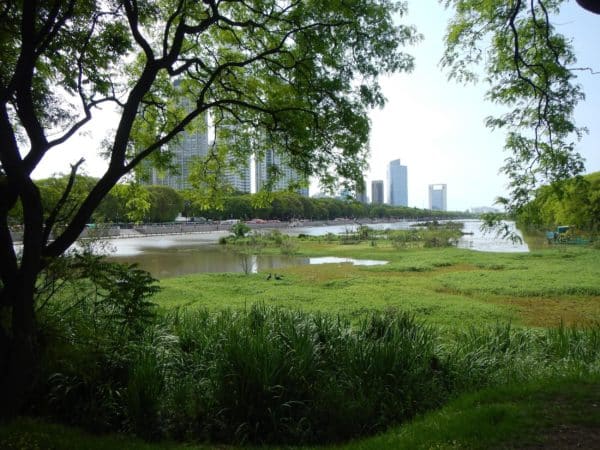
Reserva Ecológica Costanera Sur, Ciudad Autónoma de Buenos Aires, Argentina. https://rsis.ramsar.org/ris/1459
To turn the tide for amphibians, we began a conservation initiative on July 14th, 2016, with our mission being to protect and preserve amphibians and their environments in Buenos Aires. We knew we couldn’t possibly begin this journey alone: we needed the support of an active, informed and engaged community. We believed that environmental education would be the key for promoting respect and appreciation for this group of animals.
Hence, we started to organize public events, environmental education activities and awareness campaigns on our social media platforms. Later, we added undertaking research and writing articles to advance our mission and expand outreach to the community.
As a small initiative, it is sometimes hard to assess our contribution, especially now that we are in quarantine and were forced to cancel most of our plans. But every so often we come across people and stories that give us hope for the future, hope for the Earth and hope for amphibians. We would like to share a few of these stories with you and hope that it will inspire you to understand that any change, small or big, is important to save the Earth.
The most rewarding value: empathy
Villa de Mayo, Malvinas Argentinas, Province of Buenos Aires.
As Spring arrives, people get ready to clean their pools, and amphibians begin to reproduce. In urban areas these two activities collide. Just a few days ago a lady told us on Facebook that while cleaning her swimming pool, she had found tadpoles living in it and she didn’t want to harm them. After chatting with us for a bit, she decided to move them to a pond in another part of her land and add other aquatic plants so the water could get sufficient oxygen to keep the little tadpoles alive throughout their metamorphosis. It ended up that the toads belonged to at least three different species: granulated snouted tree-frog (Scinax granulatus), criolla frog (Leptodactylus latrans) and Argentine toad (Rhinella arenarum).
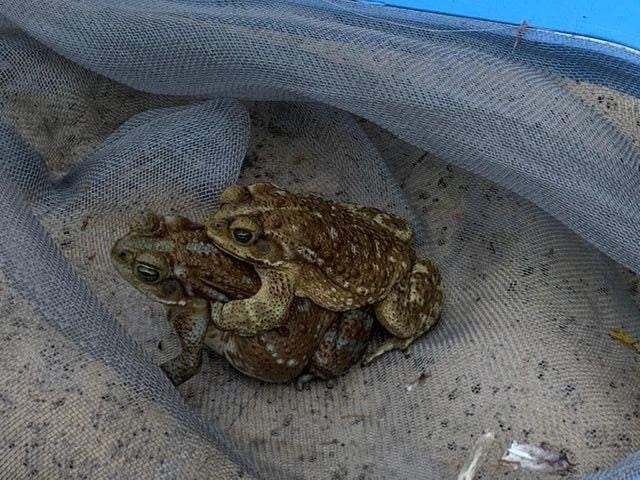
Argentine toads (Rhinella arenarum) mating
Free by nature
Quilmes, Province of Buenos Aires.
This September we received an email from a troubled father. He and his five-year-old son had captured a granulated snouted tree-frog in their backyard a few days before and were wondering how to feed it as it wasn’t eating. We explained to him that the frog was a native species and its natural habitat was their backyard where it would find all the food it needed to survive and that the best course of action would be to release it where it was found. The father replied saying he had read our email to his little son and that they had decided to set the frog and two geckos that they had found too free. The most captivating part of this story wasn’t the frog or the geckos regaining freedom but that the little kid had understood the importance of freedom and learned a new way to relate to nature.
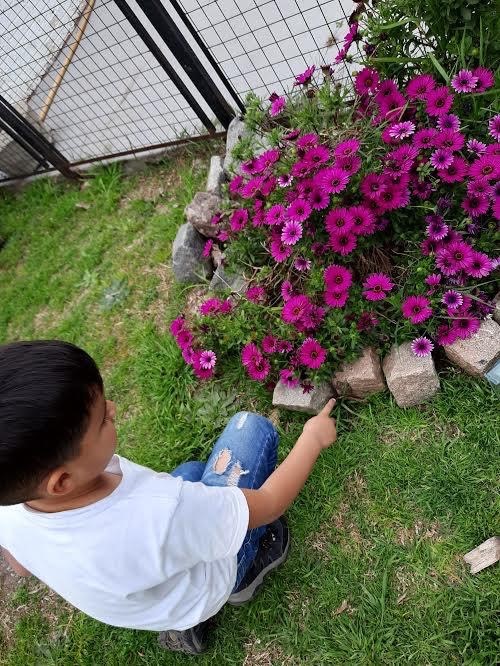
Little boy with his new friend: a granulated snouted tree-frog (Scinax granulatus)
Animal welfare above all
Olavarría, Province of Buenos Aires.
The last story we would like to share is about a young woman who found an injured Argentine toad (Rhinella arenarum) and was wondering what she could do. Apparently, the little animal had been accidentally injured while her neighbours were mowing the lawn. Although she is a veterinary student, non-domestic animals are only studied in post-graduate specializations. Unfortunately, the toad died before it could get any veterinary help. This story might not seem very positive but we chose it for a reason. The bond that ties these stories is not the individual specimen being rescued, as we can’t base an amphibians’ conservation strategy on saving a few amphibians, but people recognizing those animals as worthy of living, worrying about their wellbeing and respecting and admiring nature as a vital part in our life and the need of coexisting.
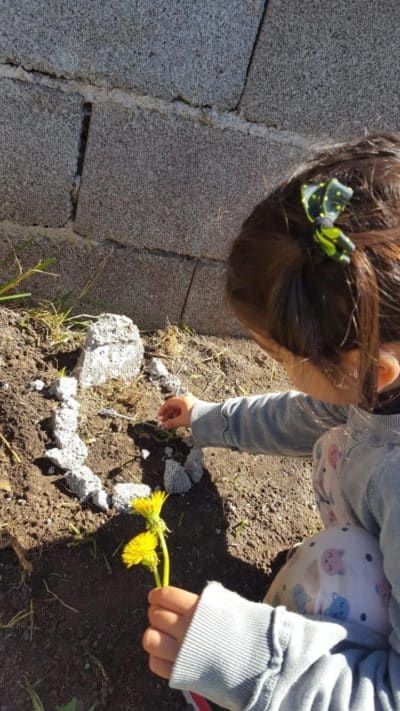
Laying flowers on the toad’s grave
These stories give us optimism towards the future of our Earth and all the species that live on it. A change is possible and it’s happening on many levels of our society.
“The first step towards change is awareness. If our actions become conscious and sustainable habits we will have won a major battle against extinction. We need to develop an informed, educated and empowered citizenry” Natalia Maruscak, founder of STF! Buenos Aires.
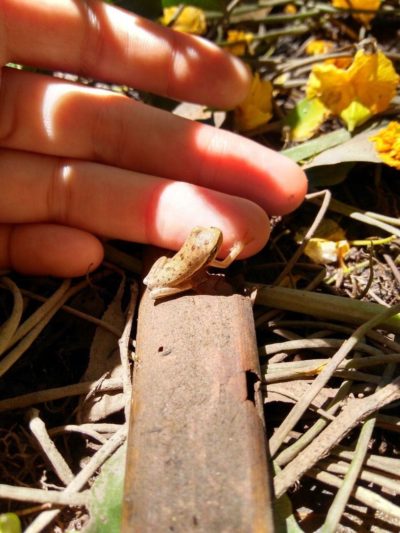
Buenos Aires es una de las 23 provincias en las que se divide la República Argentina. Alberga 15.625.084 personas y, también, 31 especies de anfibios. Lamentablemente, estos anfibios están amenazados por la urbanización, la reducción y fragmentación del hábitat, y la contaminación.

Reserva Ecológica Costanera Sur, Ciudad Autónoma de Buenos Aires, Argentina.
https://rsis.ramsar.org/ris/1459
Para revertir esta situación, pusimos en marcha una iniciativa conservacionista el 14 de julio de 2016 con el fin de proteger y preservar los anfibios y sus hábitats en Buenos Aires. Sabíamos que no podíamos encarar el viaje solos: necesitábamos de la participación de una comunidad comprometida, informada y activa. Apostamos a la educación ambiental para fomentar el respeto y el entendimiento de esta especie animal.
Consecuentemente, organizamos eventos públicos, actividades de educación ambiental y campañas de concientización en redes sociales. Más tarde, nos dedicamos a la investigación científica y redactamos artículos para promover nuestra misión y maximizar el alcance en nuestra comunidad.
Siendo una iniciativa de alcance limitado, nos resulta difícil evaluar nuestra contribución, especialmente en época de cuarentena cuando la mayor parte de los planes debió cancelarse. Sin embargo, de vez en cuando nos encontramos con personas e historias que nos devuelven la esperanza en el futuro, la esperanza en el planeta y la esperanza para los anfibios. Nos gustaría compartir algunas de estas historias esperanzadoras para inspirar a los lectores de la misma manera que nos inspiraron a nosotros y comprender que cualquier cambio, no importa la magnitud, sirve para salvar la Tierra.
El valor más gratificante: la empatía
Villa de Mayo, Malvinas Argentinas, Provincia de Buenos Aires.
Cuando llega la primavera, la gente se prepara para acondicionar la piscina y los anfibios para comenzar su período de reproducción. En zonas urbanas, estas dos actividades chocan. Hace unos días, una señora nos contactó en Facebook para contarnos que haciendo la limpieza de la piscina había encontrado renacuajos viviendo ahí y no quería lastimarlos. Después de conversar con nosotros, decidió trasladarlos a un estanque en otra parte de su propiedad y agregar algunas plantas acuáticas que aportaran oxígeno para mantener a los renacuajos vivos durante su metamorfosis. Los anfibios pertenecían a tres diferentes especies: Ranita Roncadora (Scinax granulatus), Rana Criolla (Leptodactylus latrans) y Sapo Argentino (Rhinella arenarum).

Sapos argentinos (Rhinella arenarum) copulando
Libres por naturaleza
Quilmes, Provincia de Buenos Aires.
En septiembre de este año recibimos un mail en el que un padre nos contaba su preocupación. Él y su hijo de cinco años habían capturado una ranita roncadora en el jardín y no sabían cómo alimentarla ya que no estaba comiendo nada. Le explicamos que la rana era una especie nativa y que su hábitat natural era el jardín donde podía hallar toda la comida que necesitaba para sobrevivir y que la mejor decisión era liberarla en el mismo lugar donde la habían encontrado. Volvió a contactarnos para contarnos que después de leer nuestra respuesta, su hijo y él habían decidido liberar a la rana, y a dos lagartijas que habían capturado ese mismo día. La parte más emocionante de esta historia no es que la rana o las lagartijas recuperaran la libertad, sino que el niño entendiera la importancia de la libertad y aprendiera a relacionarse con la naturaleza de otra manera.

El niño y su nueva amiga: una ranita roncadora (Scinax granulatus)
Ante todo el bienestar animal
Olavarría, Provincia de Buenos Aires.
La última es la historia de una joven que encontró un sapo argentino lastimado (Rhinella arenarum) y se preguntaba qué podría hacer. Aparentemente el pequeño animal había sido accidentalmente lastimado cuando los vecinos cortaban el césped. Aún siendo estudiante de veterinaria, el estudio de los animales no domésticos recién se realiza en una especialización de posgrado. Lamentablemente el sapo murió antes de recibir ayuda veterinaria. Aunque esta historia no parece tener un final feliz, la elegimos por un motivo. El lazo que une a estas historias no es el ejemplar rescatado, ya que no podemos basar una estrategia de conservación de anfibios en salvar algunos individuos, sino en que las personas reconozcan la importancia de valorar el derecho a la vida de estos animales, se preocupen por su bienestar y respeten y admiren la naturaleza como parte esencial de la vida y de la necesidad de coexistir.

Colocando flores en la tumba
Estas historias nos brindan optimismo sobre el futuro de nuestro planeta y las especies que lo habitan. El cambio es posible y está pasando en muchos niveles de la sociedad.
“La concientización es el primer paso del cambio. Si somos conscientes de nuestras acciones y seguimos hábitos sustentables habremos ganado la primera batalla contra la extinción. Tenemos que trabajar para informar, educar y empoderar a los ciudadanos.” Natalia Maruscak, fundadora de STF! Buenos Aires.

Traducción por Laura Demoy.


